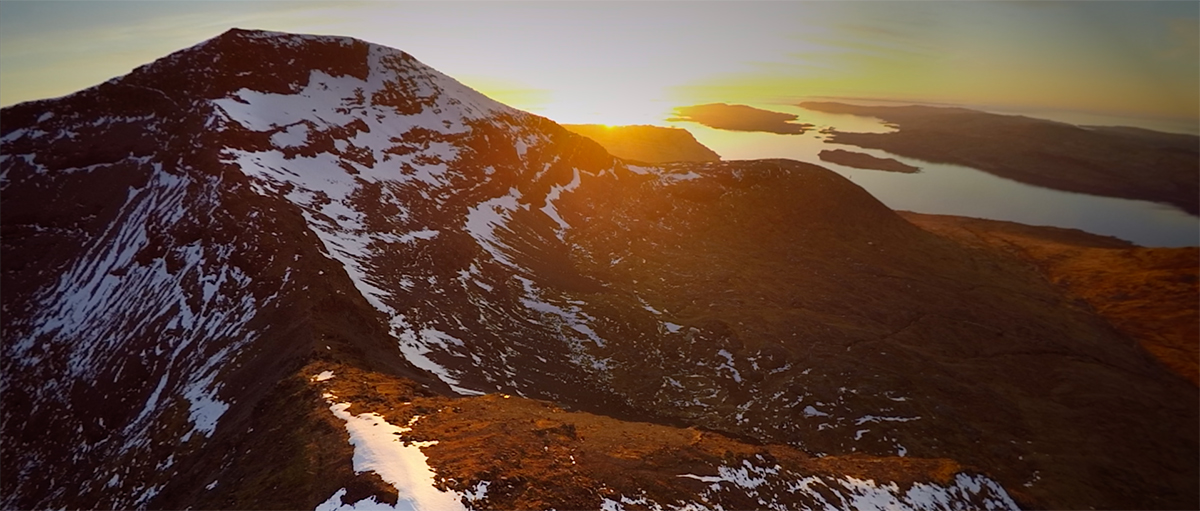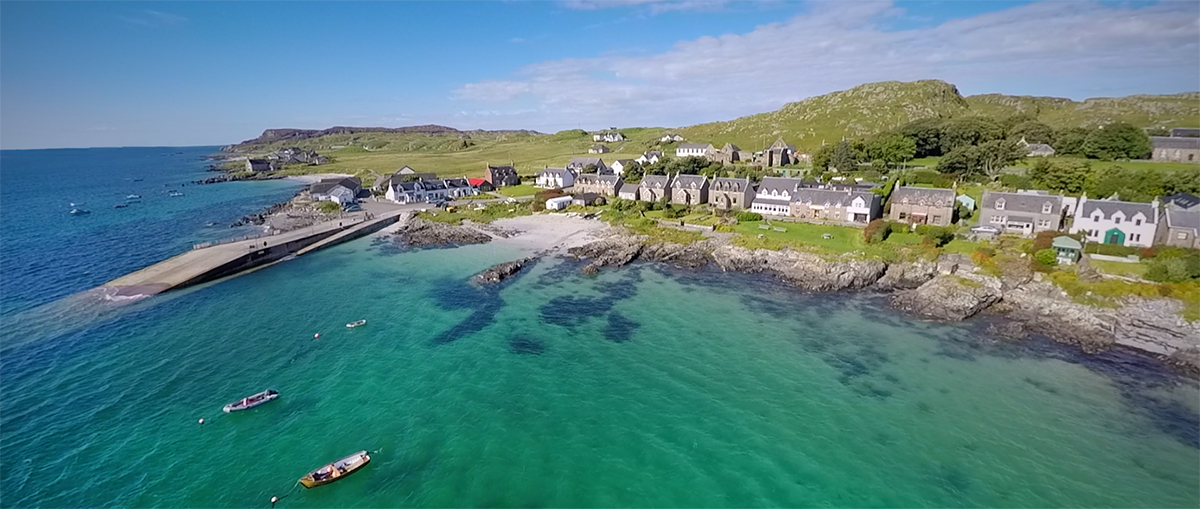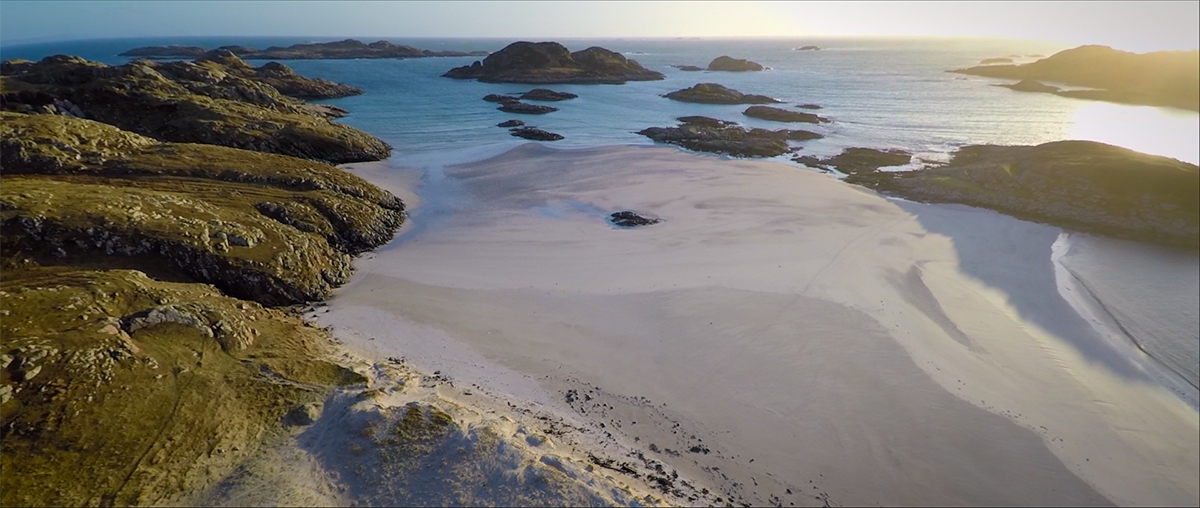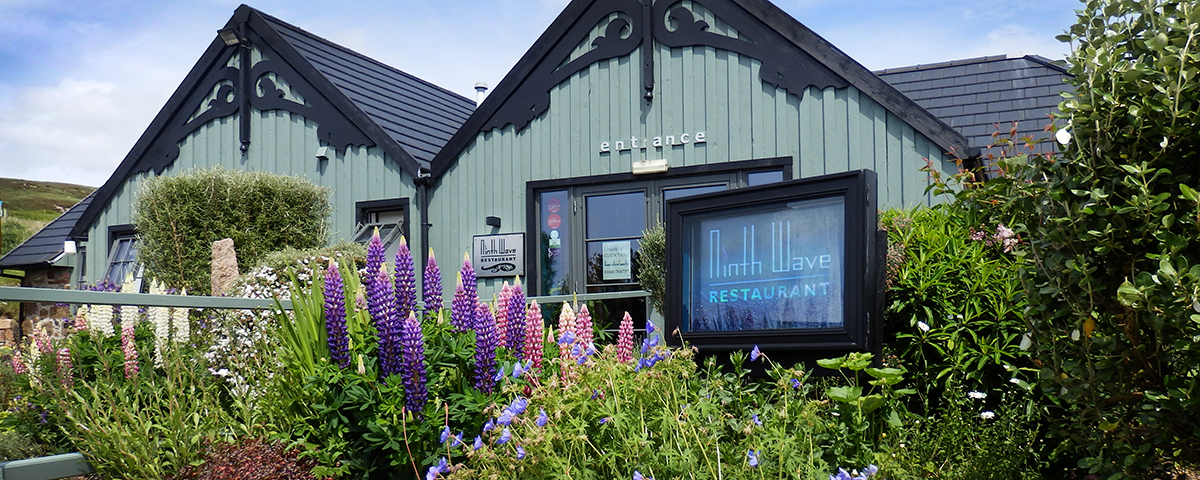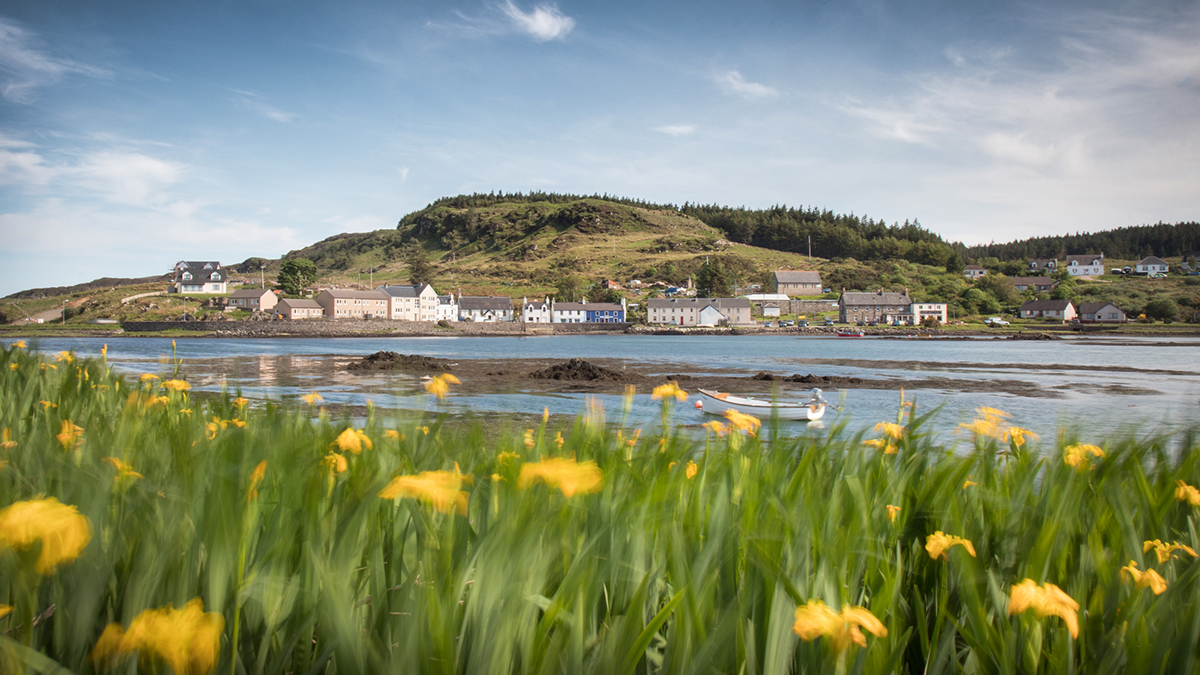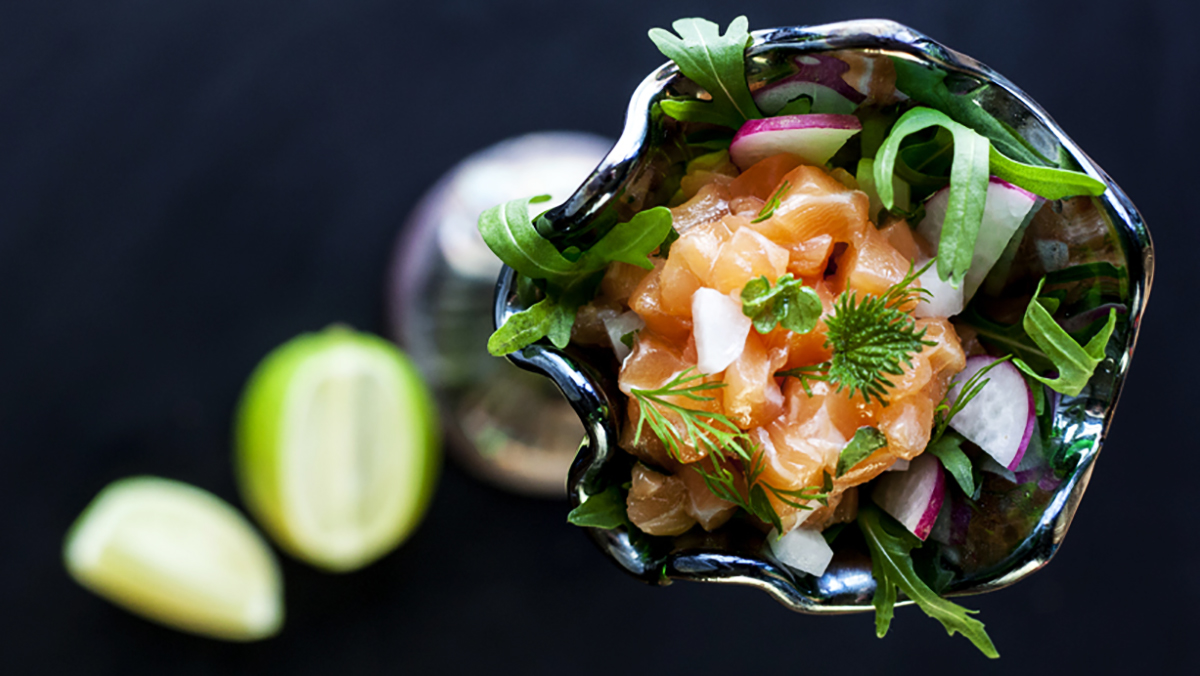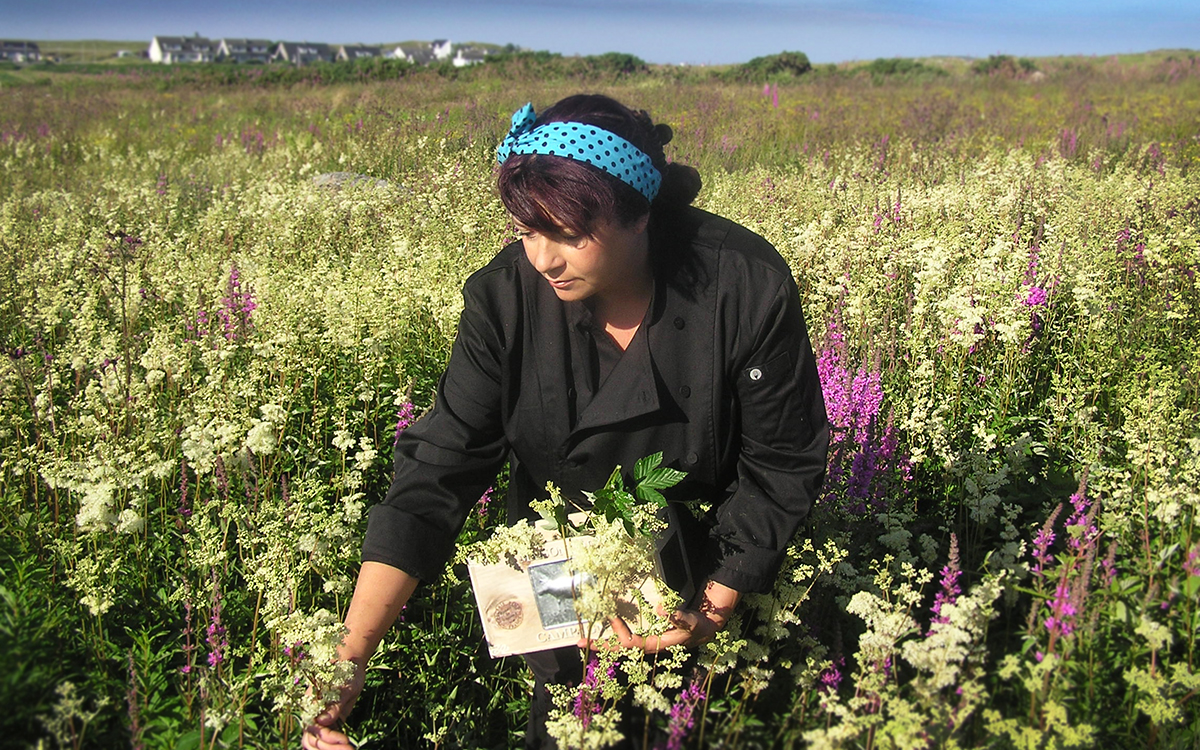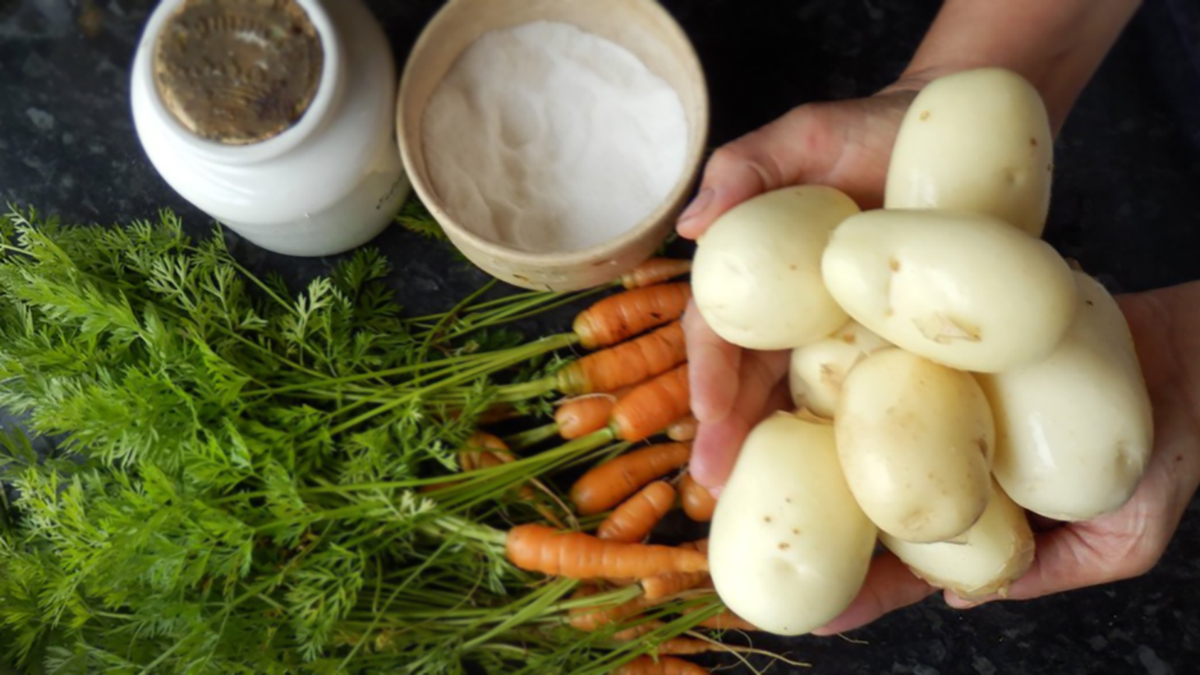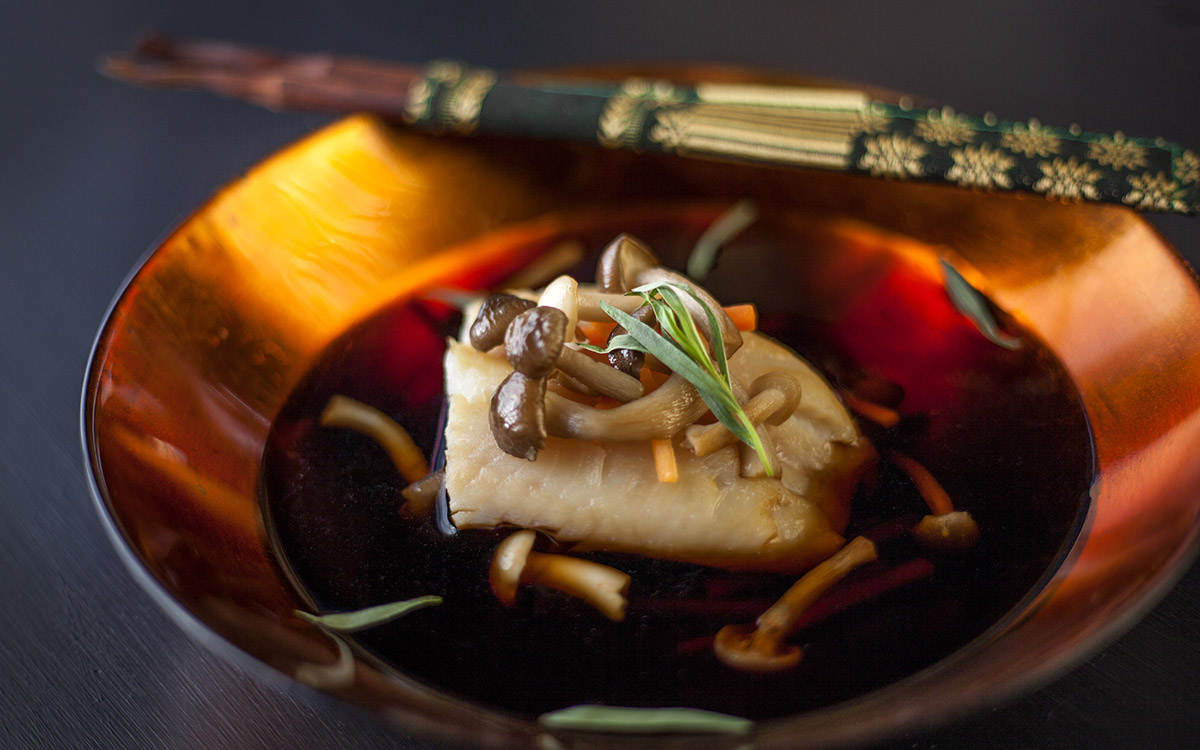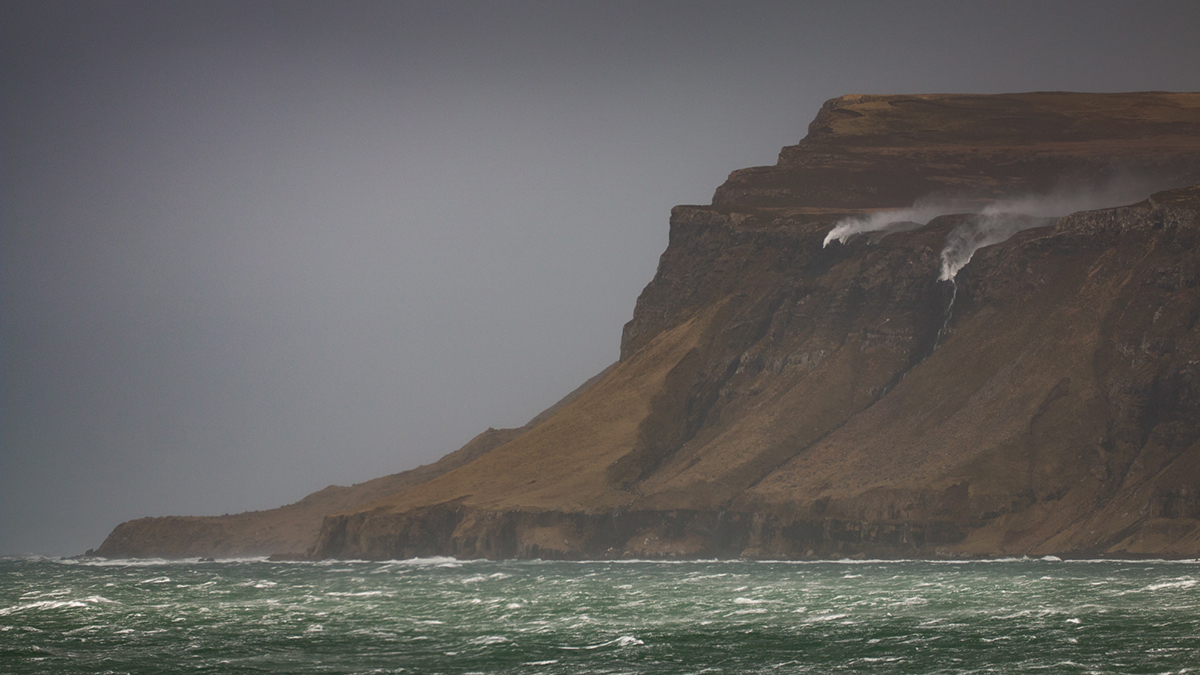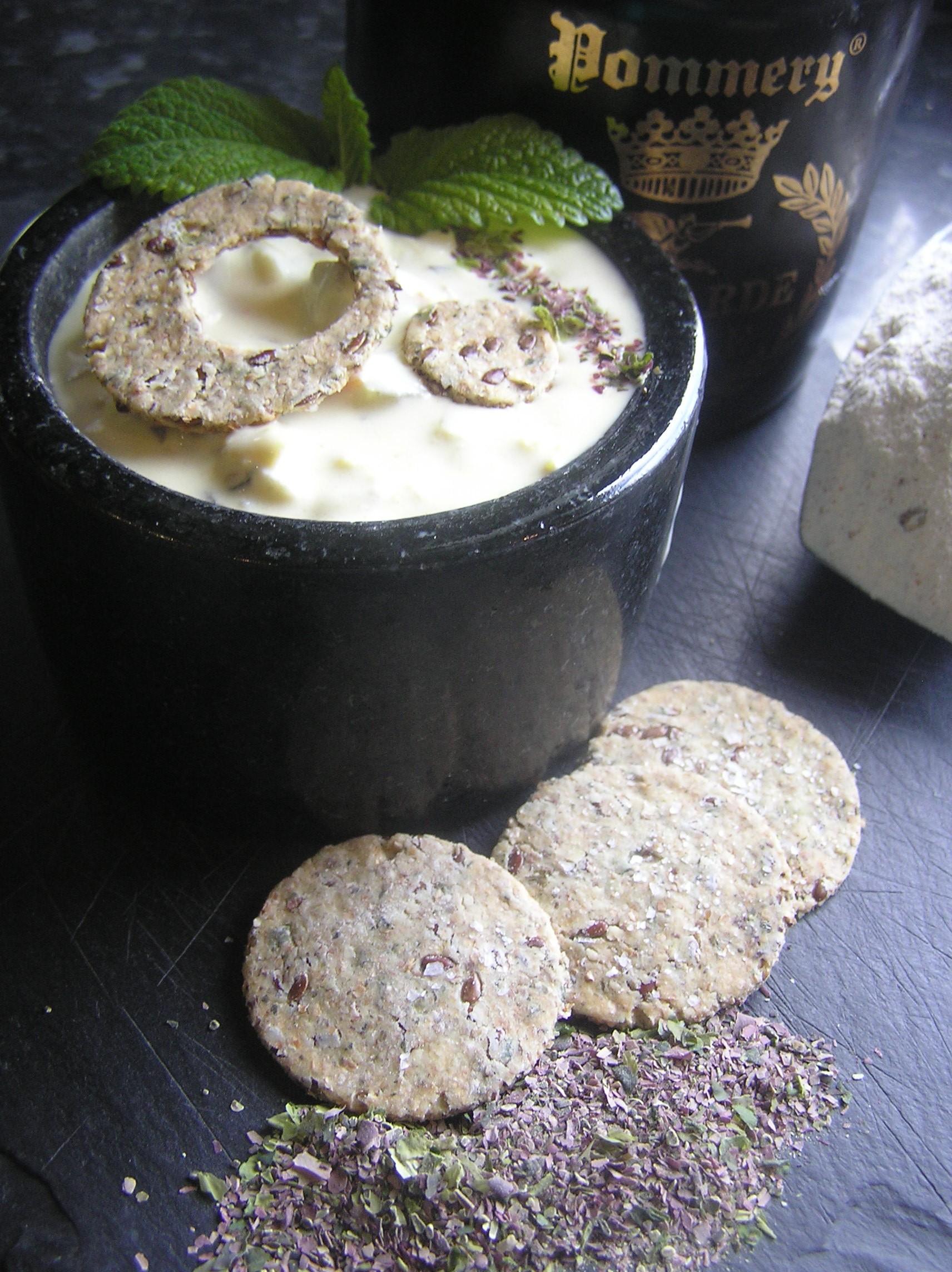Isle of Mull Photos That Will Take Your Breath Away
Get a new perspective on the Isle of Mull with these dizzy images!
The Isle of Mull has a well deserved reputation as a photographer’s paradise. Little wonder, then, that many locations have been the subject of visitors’ photos time and again. We took to the skies to discover new perspectives of old favourite locations throughout the Isle of Mull and we hope you enjoy them too.
We are going to focus on the beauty of the locations and the circumstances and timing of the images, perhaps inspiring a visit and stay in one of our hand picked range of holiday cottages on Mull.
Ben More
It was one of those perfect sunny days towards the end of March. A touch of warmth in the sunshine brings signs of spring to Mull, yet snows still clads the mountains and the days are just beginning to get lighter and longer. We timed our climb of Ben More to coincide with sunset, which at this time of the year drops behind the Isle of Ulva from this location. We took the circular route via Beinn Fhada and over the A’Cioch ridge before reaching the summit after dark and heading down the mountain to Dhiseig in the faint afterglow. The filming was a success with only light wind over the ridge. We’ve tackled this munro in the winter too – find out about our climb here.
Iona
During the work on our guide to Mull’s islands we of course included Iona. Iona is a emerald gem of an isle with a important historical role that is matched by the richness of the fine machair grasslands, which back the white sandy beaches. With a population of around 150 people, Iona has one village – Baile Mor – which you see as you approach on the ferry from Mull. In this view you can see the row of traditional stone cottages, each with a seaward facing garden in front.
Knockvologan
There’s no doubt that some of Scotland’s best beaches are on the Isle of Mull. Be it the famous Calgary beach in the north, or one of the hidden coves on Mull’s south coast, with more than 20 beaches to visit there is something for every occasion. When working on our Isle of Mull beaches guide we visited one of the the more spectacular stretches of sand at Knockvologan. It was a still, sunny day in February. At this time of year the sun sets behind the south-west tip of Iona. The days are shorter and the low angle light provides perfect conditions for picking out the details in the landscape. This view looking south toward the distant Torran Rocks give a great perspective over the broad sweep of white sands that form the beach.
Loch Uisg
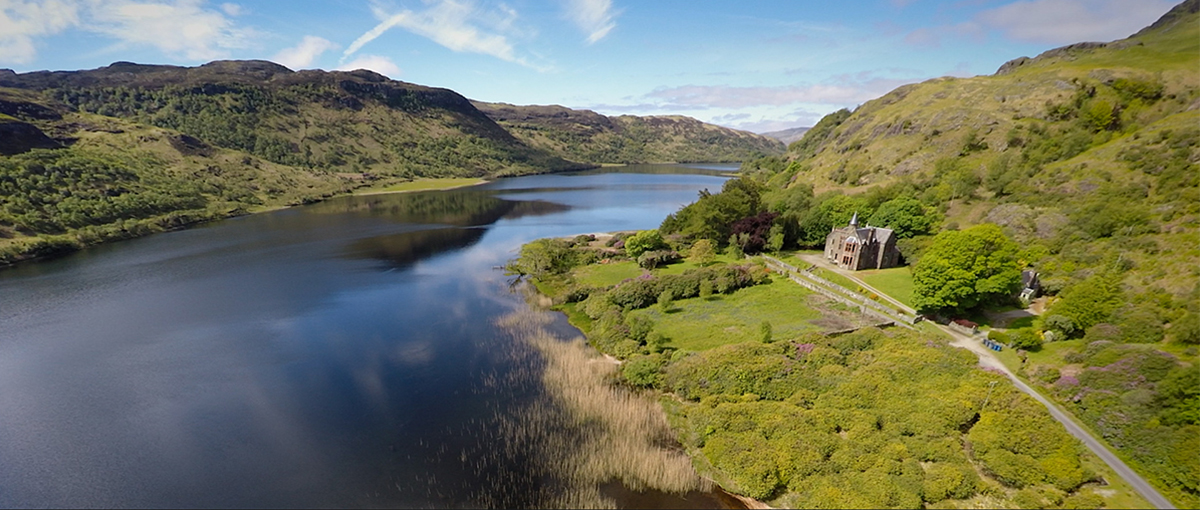
In late May, the long days of early summer are well on the way. Mull’s landscape is mainly transformed into a rich verdant green. At this time rhododendron flowers are in full bloom and nowhere is the display more impressive than along the shoreline of Loch Uisg. The single track road to Lochbuie skirts the edge of the loch and the whole drive can resemble a giant natural garden at times! This image is looking west along the line of the Great Glen Fault, which runs under this part of Mull. The house is Craig Ben Lodge. It’s a beautiful property built in the Bryce Baronial style.
Traigh na Cille
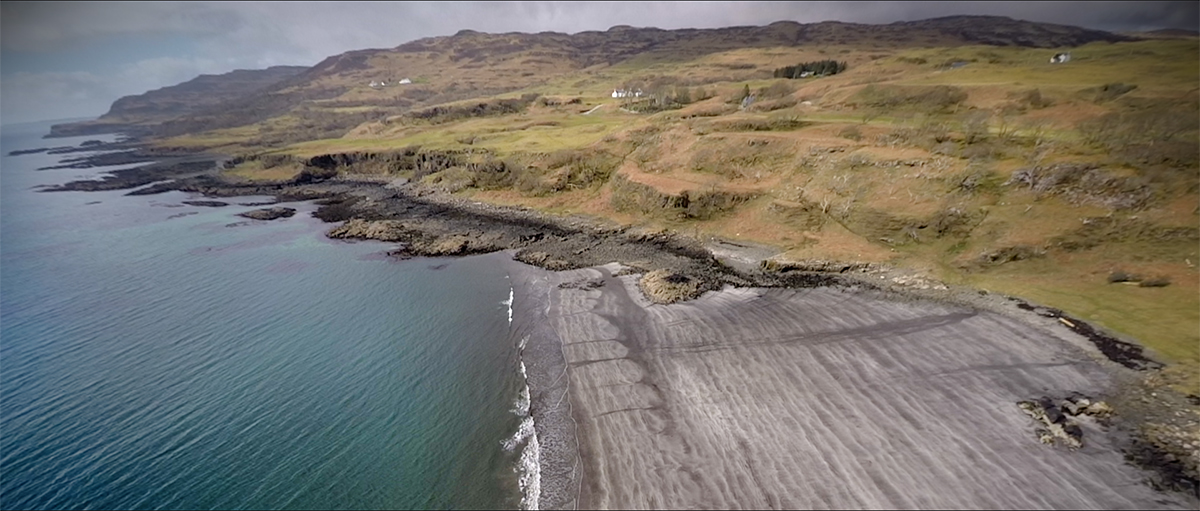
Here we jump to early April on north Mull’s west coast and to the beach of Traigh na Cille at Kilninian. This is one of north Mull’s larger beaches. It is well known for its dark sand sediments, which you can see in this image form a distinct linear banding as the tide rises and falls. The name of beach means ‘beach of the cell’, as in a monastic cell. This is most likely a connection to the times of St. Columba on Iona and the growth in Christianity in western Scotland. This view looks to the north past Torloisk and towards Treshnish.
Loch na Keal

On the first Sunday in June each year, the Isle of Mull Cycling Club organise and run the Isle of Mull Cyclesportive. Here you can see Mull cycling club members making their way along the shore of Loch na Keal. Pictured in late September, this photo is from a promotional video we made for the Sportive. It showcases the outstandingly beautiful route and explains how proceeds from entrance fees go towards good causes in the local community.
Iona Ferry, Fionnphort
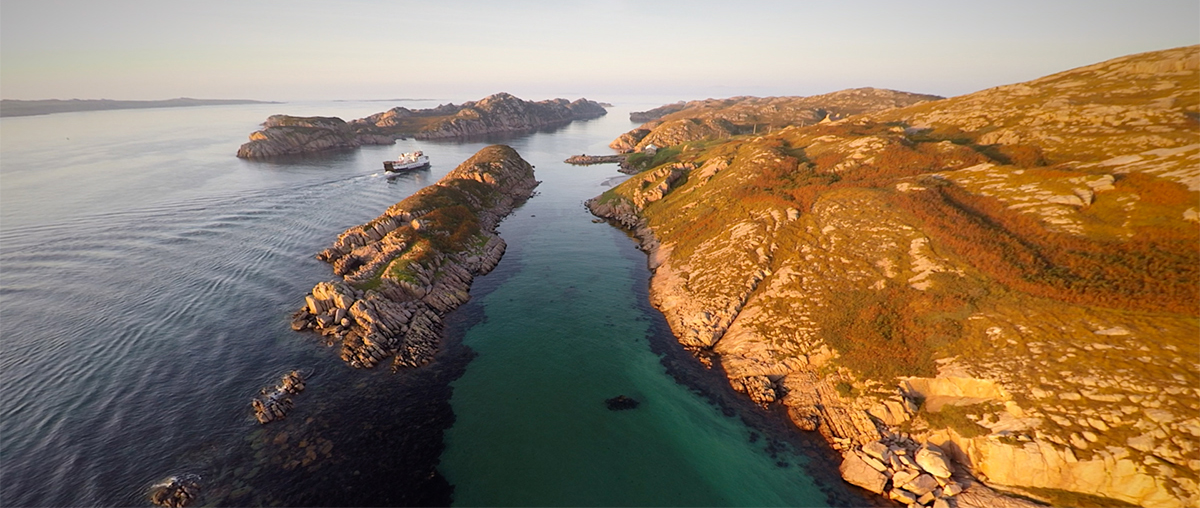
This image looks over the Isle of Mull’s most westerly point near the village of Fionnphort on the Ross of Mull. Taken near sunset on a late September evening, the picture shows the Iona Ferry heading to its overnight mooring in the Bull Hole. This is the name for the channel of water that is protected by the small island of Eilean Nam Ban. The coastline here is made of a distinctive pink granite, which was at one time quarried and used as decorative stone in buildings throughout the world.
Eas Fors Waterfall
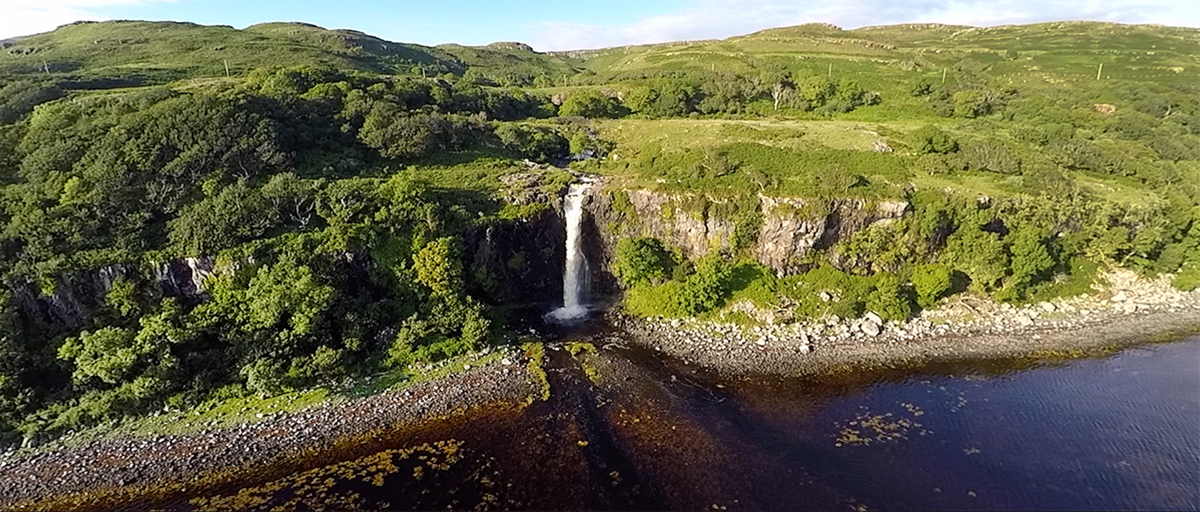
On the west coast of north Mull you will discover a landscape of distinct terraced strata. In fact, most of the geology of north Mull is comprised of these ‘steps’, caused by volcanic lava flows which set into visible layers. Where burns and rivers flow down hill they become waterfalls as they pass these layers. One of the most dramatic is Eas Fors, which cascades straight into the sea at Loch Tuath. There is a parking area near these falls and a path explores the area – take care near the drop!
Port na Ba
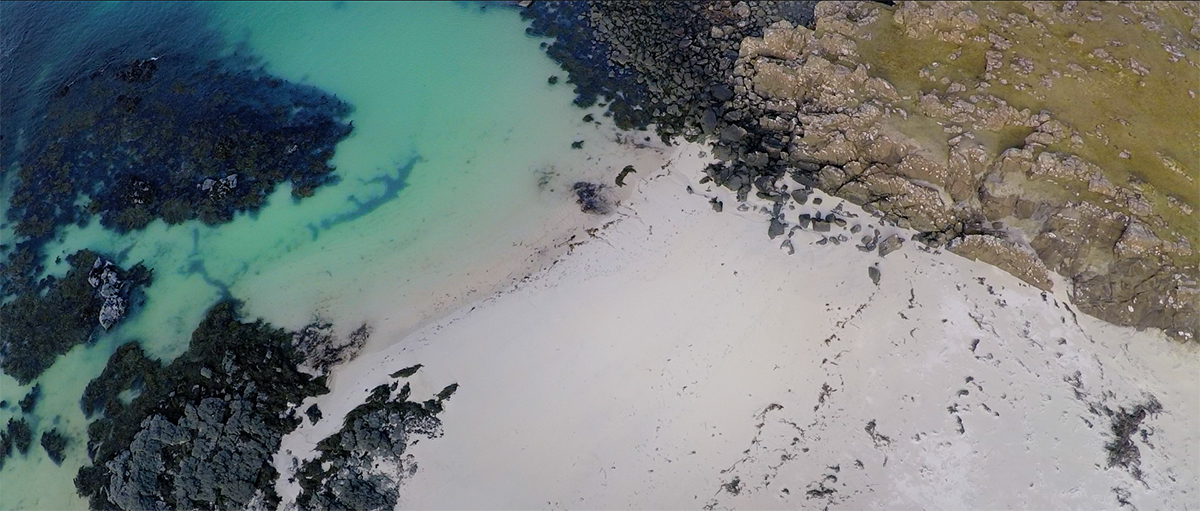
Located on the Isle of Mull’s north coast, Port na Ba is a beach of fine white sands, aqua waters and views towards the isles of Rum, Eigg and Skye. Perfect for a paddle or swim, this photo shows the gently sloping sands and clarity of the sea. It’s a bird’s eye view that shows Mull’s coastline is beautiful from any angle!
River Lussa
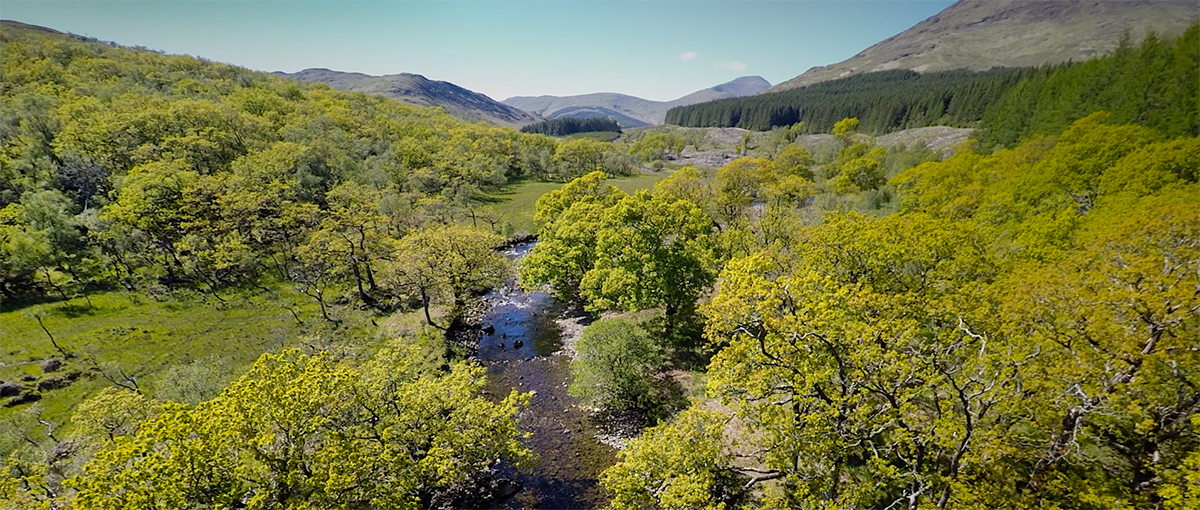
Situated in Mull’s south east, the river Lussa is one of Mul’s larger water courses. The catchment is in Mull’s mountainous interior and the river gains size from tributaries that join from the flanks of Creach Beinn. After cascading through a series of pools and a small gorge, the river enters the native oak woodland visible in this springtime photo. The image is taken from a vantage point just higher than the canopy of the trees, affording a view to the distant mountain Beinn Talaidh.
Beinn Fhada
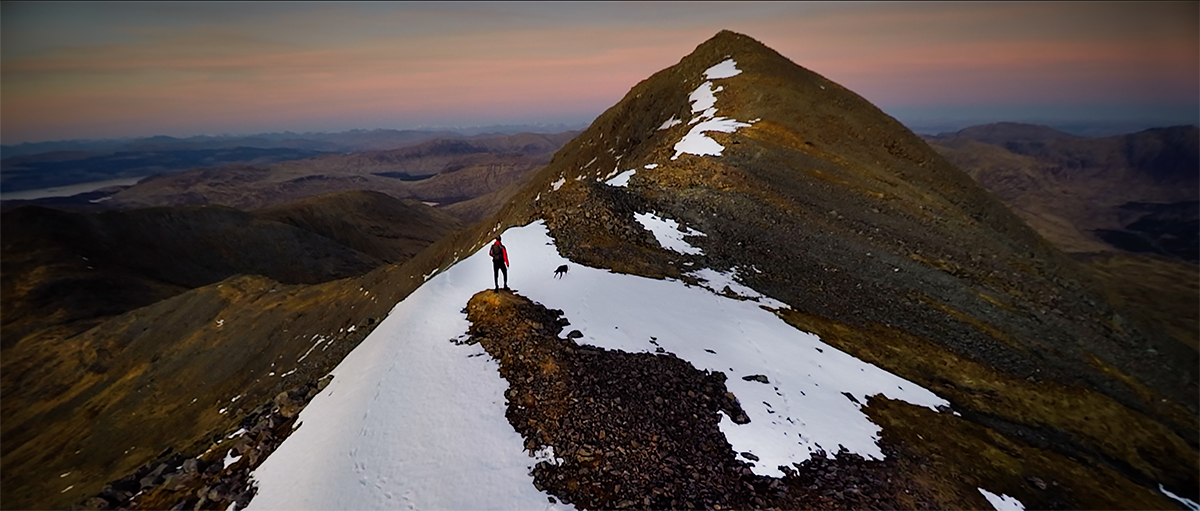
Our final image in this collection shows a lone walker and dog crossing the long ridge of Beinn Fhada (702m) in the Isle of Mull’s interior. Mull has a well deserved reputation as one of the best islands for walking and this image typifies the at times wild but always beautiful nature of the island in the winter months.
We hope these photos have inspired you to plan that next visit to the Isle of Mull and perhaps a relaxing break in one of our select range of quality holiday cottages.
Which of these snapshots of the Isle of Mull do you like best? Have you visited any of these scenic places?

